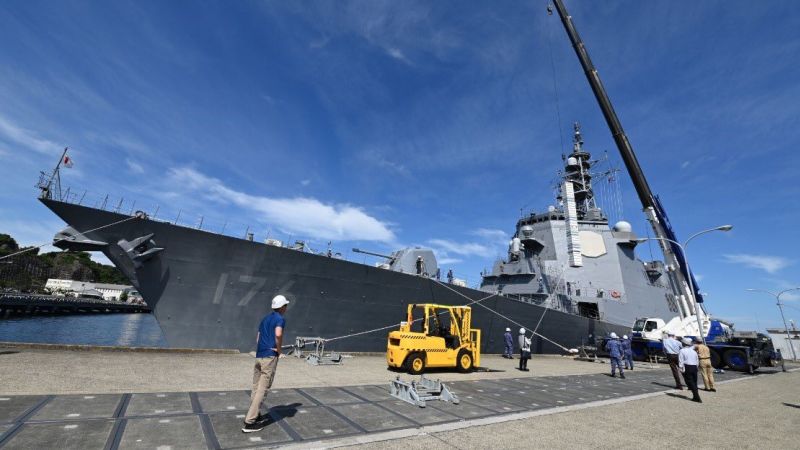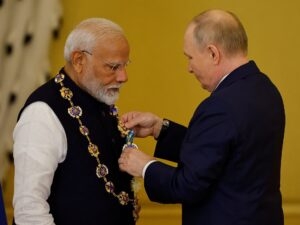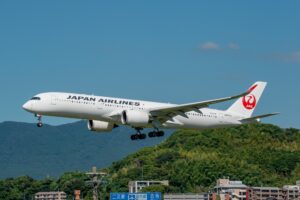
A Japanese warship, the JS Chokai, is currently en route to the United States to be equipped with Tomahawk cruise missiles. This strategic move by Washington and its Asian allies aims to bolster their military capabilities as regional adversaries, including China and North Korea, continue to expand theirs. The deployment marks a significant escalation in the Pacific arms race.
The JS Chokai, an Aegis-equipped guided-missile destroyer, will undergo a year-long deployment in the US. During this period, the ship will be modified and its crew trained to launch the Tomahawks, which are maneuverable cruise missiles with a range of approximately 1,000 miles. This capability would allow the Japanese warship to target areas deep within China or North Korea.
Japan’s Strategic Shift
In early 2024, Japan signed an agreement with the US to acquire 400 Tomahawks as part of its broader strategy to increase defense spending. This decision reflects Tokyo’s response to what Defense Minister Gen Nakatani described as the “most severe and complex security environment” since World War II.
The Japanese Defense Ministry’s annual white paper, released in July, identified China’s military activities as “the greatest strategic challenge” to Japan. The document highlighted Beijing’s rapid enhancement of military capabilities and intensified activities in the region, including around the disputed Senkaku Islands, which are controlled by Tokyo but claimed by Beijing as the Diaoyus.
Regional Tensions and Reactions
China’s military advancements were prominently displayed during a September 3 military parade in Beijing, showcasing powerful anti-ship missiles. Notably, Chinese leader Xi Jinping was accompanied by North Korean leader Kim Jong Un and Russia’s Vladimir Putin, underscoring the complex geopolitical dynamics in the region.
In response to Japan’s military enhancements, China’s Foreign Ministry spokesperson Mao Ning criticized the move, arguing it exacerbates the regional arms race and undermines global strategic stability. “The moves by the US and Japan exacerbate the momentum of an arms race, affect peace and stability in the region, seriously disrupt global strategic balance and stability and undermine the international order,” Mao stated.
The Role of Tomahawk Missiles
Tomahawk cruise missiles are a cornerstone of the US military’s arsenal. According to Raytheon, the manufacturer, these missiles “can strike targets precisely from 1,000 miles away, even in heavily defended airspace.” They have been utilized in combat over 2,000 times, including recent US attacks on Iranian nuclear facilities.
Tomahawks are “used for deep land-attack warfare,” according to a US Navy fact sheet, and are considered offensive weapons despite Tokyo’s emphasis on their defensive capabilities.
Besides naval surface ships, Tomahawks can be launched from submarines and land platforms. The US Navy, Britain’s Royal Navy, and the Royal Australian Navy have all demonstrated Tomahawk launch capabilities. Australia, for instance, successfully fired a Tomahawk from the destroyer HMAS Brisbane and plans to acquire 200 more to enhance its long-range precision strike capabilities.
Looking Ahead
The Japanese Defense Ministry plans to have the JS Chokai ready for “actual missions” by next summer, following a series of live-fire tests. The ship recently practiced loading dummy Tomahawk munitions into its vertical launch cells, marking the initial steps in this process.
The 528-foot-long, 9,500-ton Chokai is equipped with 90 vertical launch cells, capable of deploying a variety of missiles, including surface-to-air, anti-ballistic, air defense, and anti-submarine rockets. Its size and armament are comparable to the US Navy’s Arleigh Burke-class destroyers.
This development represents a significant shift in Japan’s defense posture, reflecting broader regional security concerns. As tensions continue to rise in the Pacific, the deployment of Tomahawk-equipped warships underscores the evolving nature of military alliances and strategic priorities in the region.






